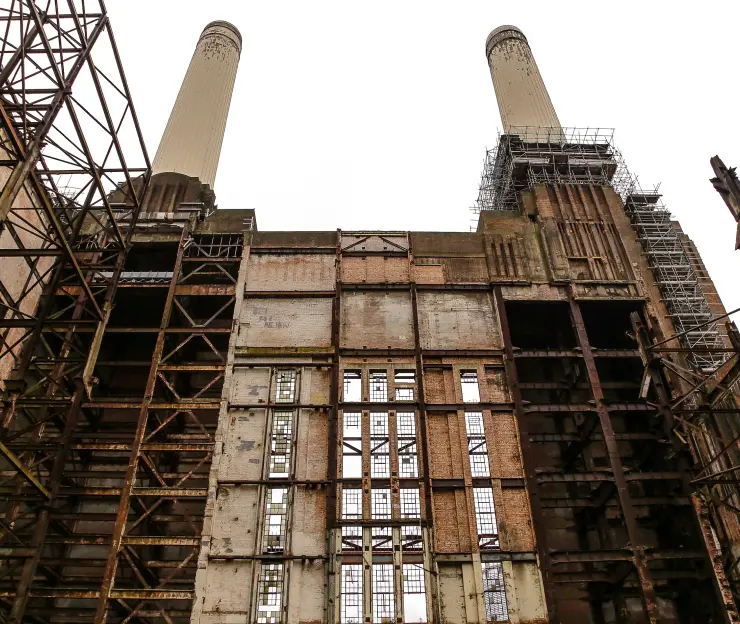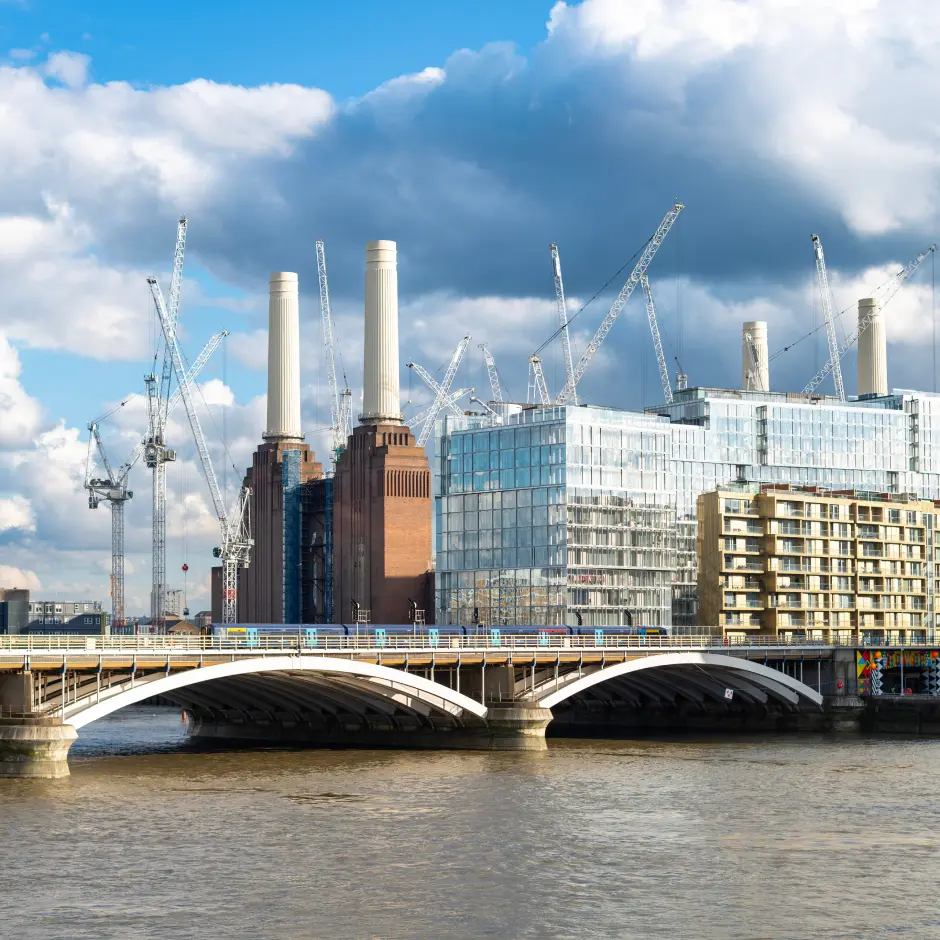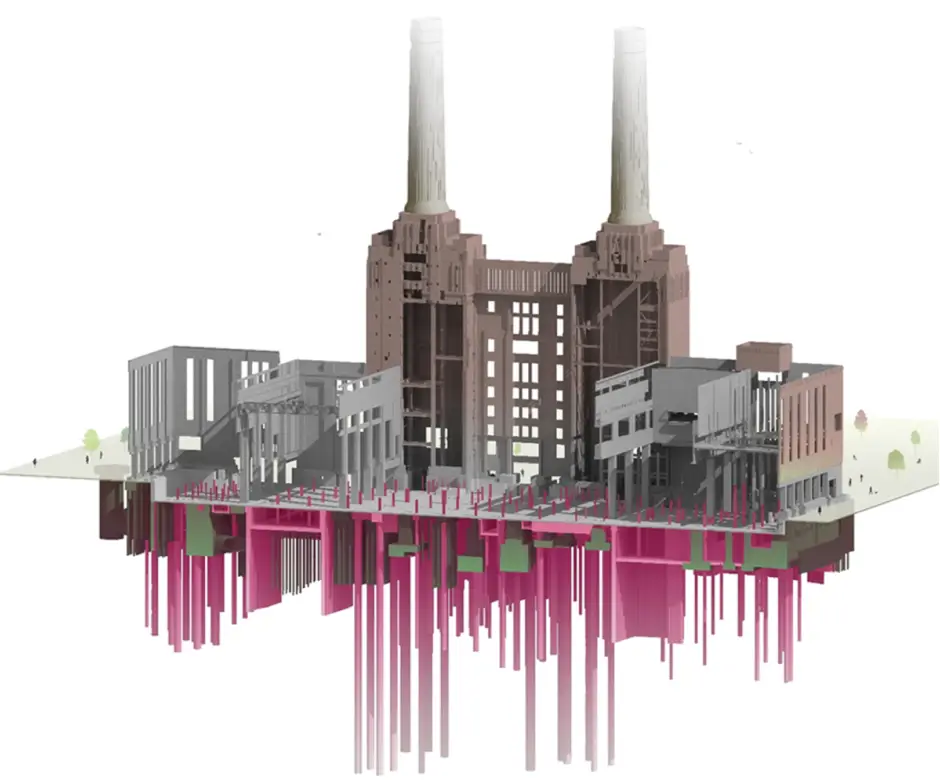1929
Beginning of the original construction
Work begins on the site. Sir Giles Gilbert Scott, one of the most
prominent architects of the time, also responsible for Britain’s
red telephone boxes, joins the project. Initially, the chimneys
were supposed to be square rather than circular.
1955
Peak electricity production
The fourth chimney and the second stage of the Battersea Power
Station are completed. The space inside the main boiler house is
so vast that St Paul's Cathedral could fit inside.
1983
The power station stops generating electricity.
Battersea Power Station is decommissioned, marking the end of an
era for this iconic structure. A period of decline begins, and the
future of the power station is uncertain. It is later purchased by
Battersea Leisure in 1987 and Parkview in 1993.

2012
International investment
The Power Station is purchased by the current shareholders, SP
Setia, Sime Darby Property and the Employers Provident Fund,
ending decades of decay. The following year, work begins to
redevelop the 42-acre site surrounding the power station, creating
a new community of homes, shops, cafes, restaurants, cultural
venues and open spaces for London.

2016
Sika begins the groundwork
Groundworkers began excavating and waterproofing the concrete
basement, facing challenges with existing structural elements. The
waterproofing extended down to the service tunnels that would
carry power and essential services to various parts of the
structure.

2022
Inauguration
Battersea Power Station has reopened its doors to the public on
October 14, 2022.

1929
1955
1983
2012
2016
2022